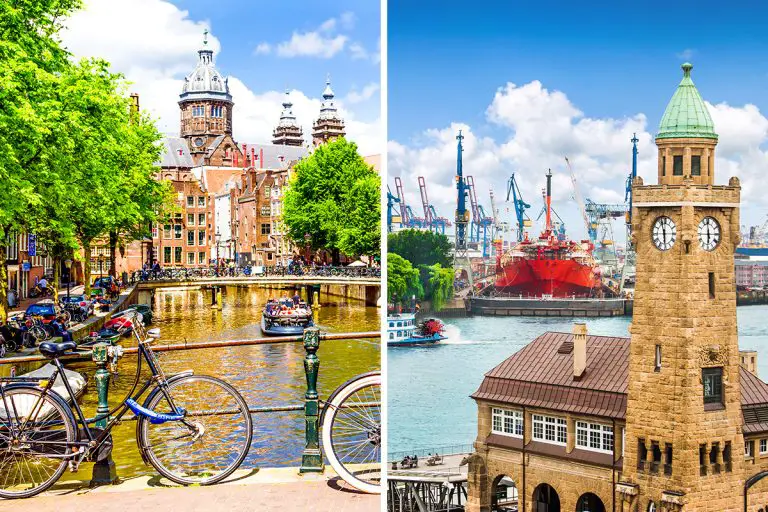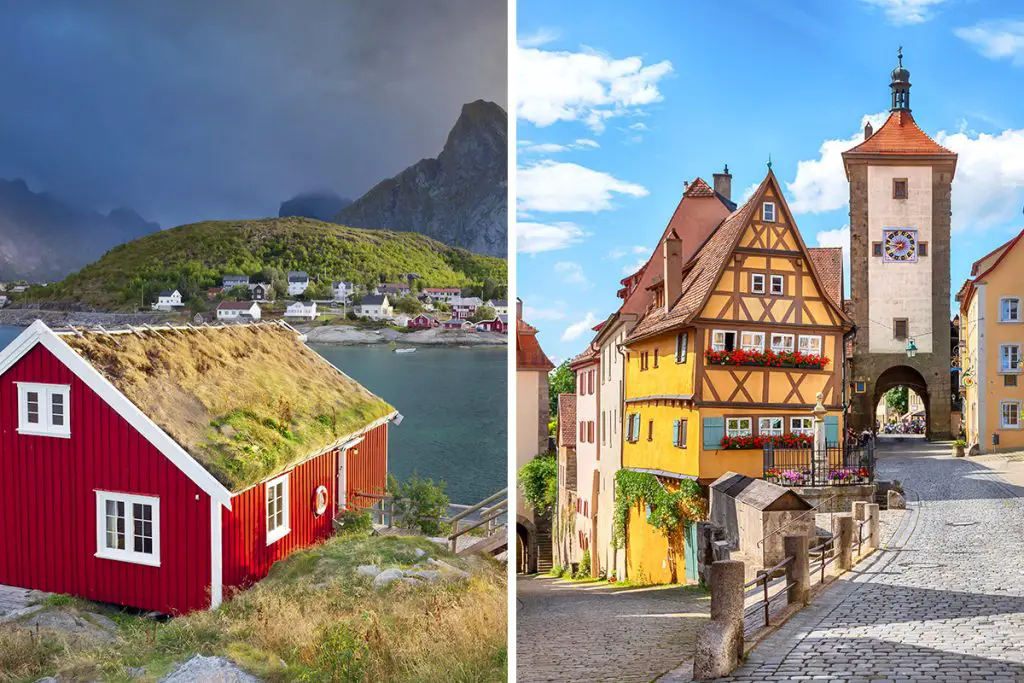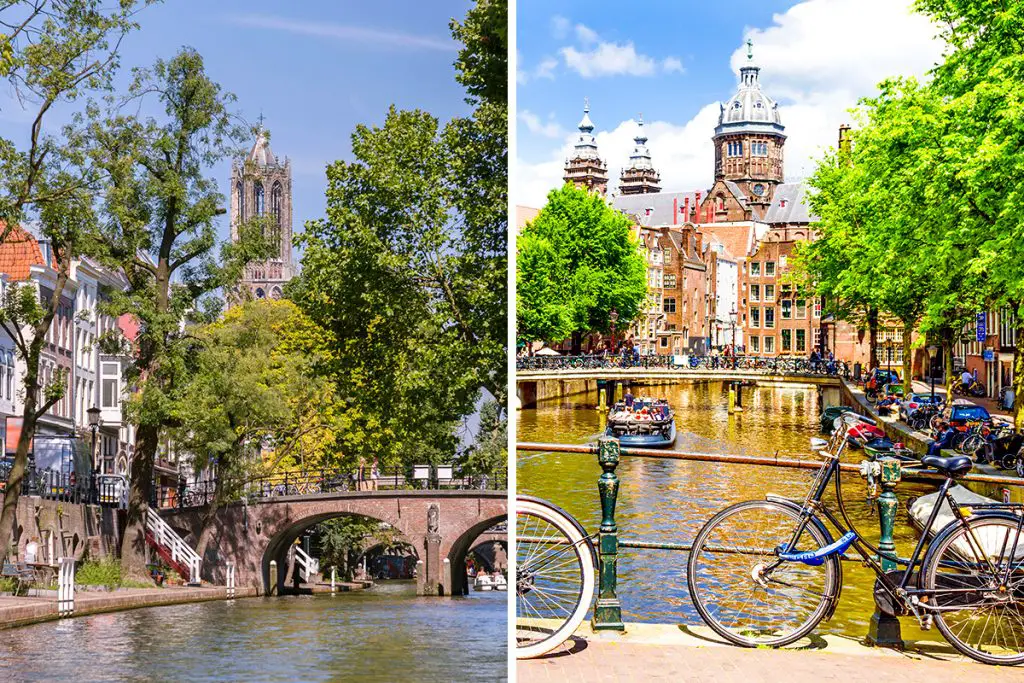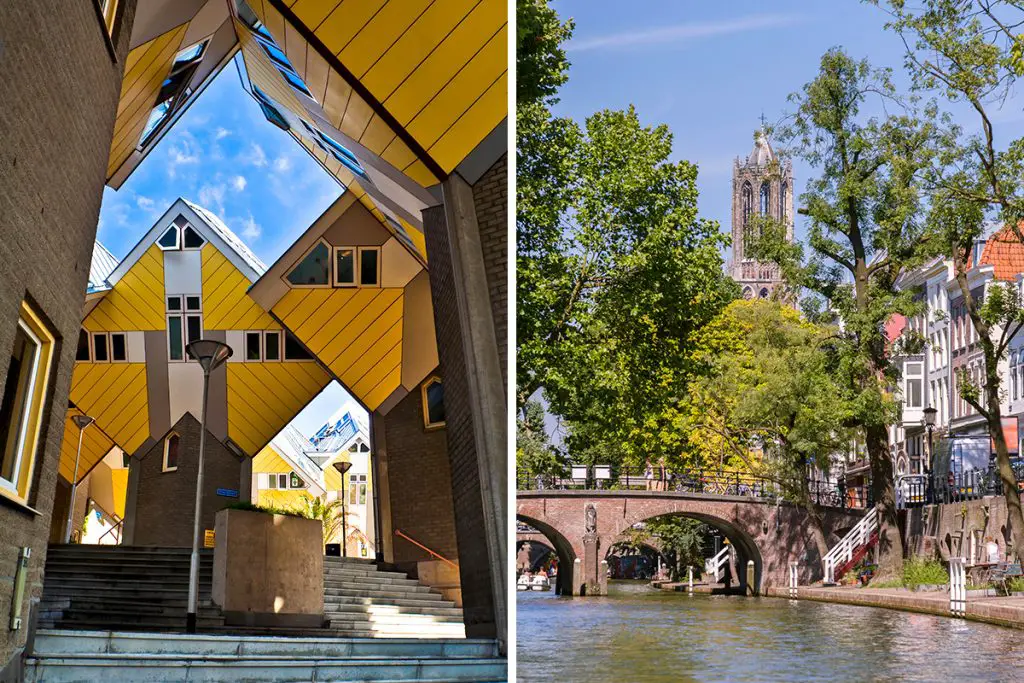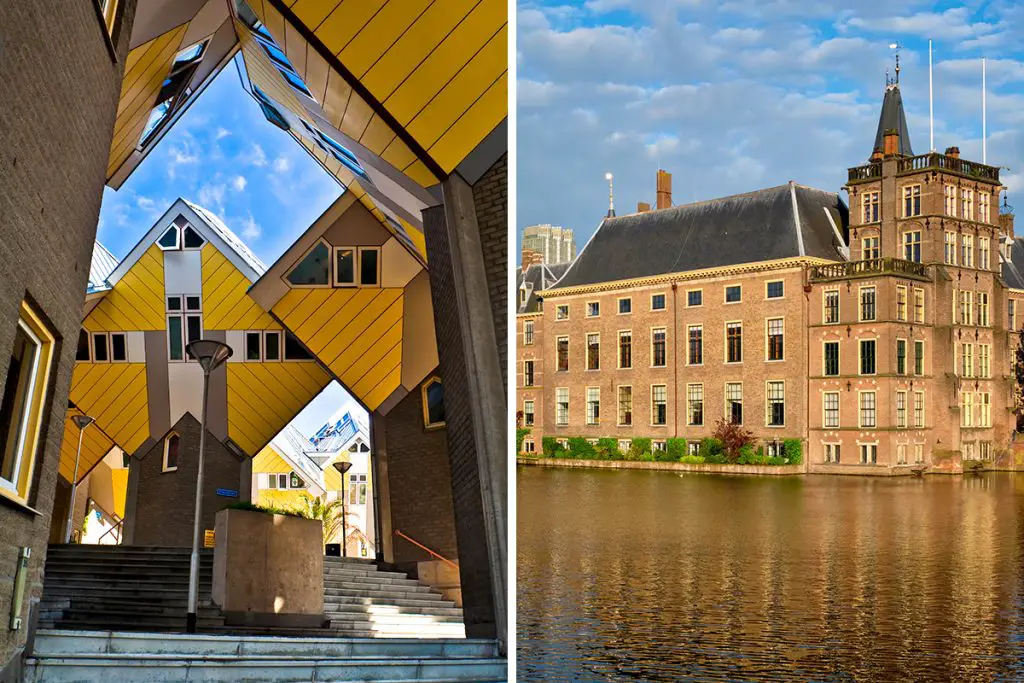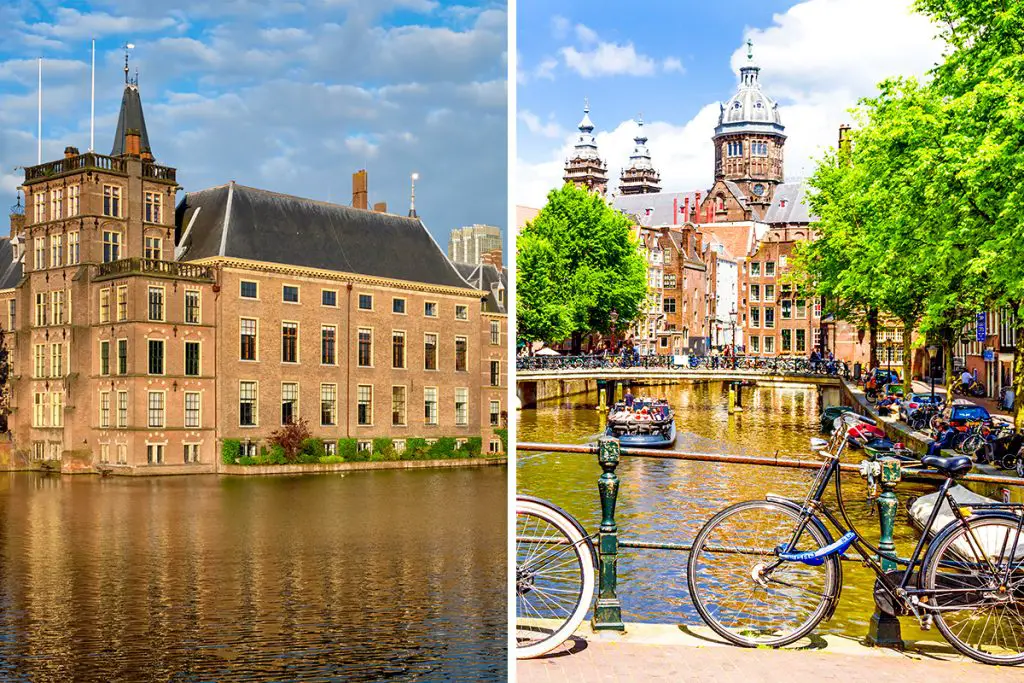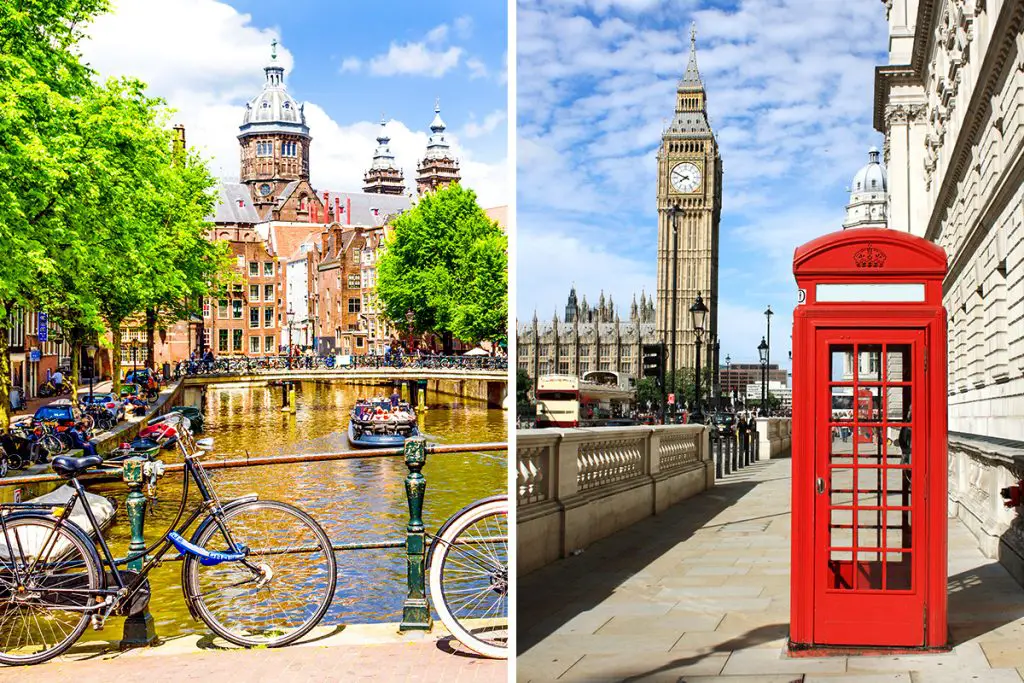When pondering over your next holiday destination, the choice can often feel overwhelming especially when it comes to comparing two gems like Amsterdam and Hamburg. Both cities are renowned for their unique histories and cultural landscapes that promise enriching experiences. So, are you ready to dive deeper and explore what makes each of these cities a treasure in its own right? Your journey into unraveling the tales of these European beauties starts here.
History & Culture
Amsterdam and Hamburg have long-standing histories that stretch back to the early medieval times. Their pasts have significantly influenced the culture and ambiance you’ll experience today.
In Amsterdam, history is a living tapestry, with every canal and cobblestone telling tales of the old days. The city’s historical center, a UNESCO World Heritage site, is a testament to its rich past. It’s like taking a step back in time as you wander through its quaint streets and byways.
The culture here is deeply rooted in the city’s maritime past, showcasing a love for exploration and artistic expression.
Conversely, Hamburg has a different tale to narrate. Its maritime tradition is a major part of the city’s identity too, but it melds with a modern, cosmopolitan vibe. The harbor city has always been a nexus of trade and has a proud history of being a free city, which has shaped its open and progressive culture.
Unlike Amsterdam’s age-old charm, Hamburg’s architectural scene is a mixture of historical and modern designs that reflect the city’s forward-thinking spirit.
The cultural scene in both cities is thriving and diverse. Amsterdam is well-known for its museums, art galleries, and theaters, which are a window into the city’s historical and artistic heritage. The Dutch capital’s open-mindedness and tolerance are reflected in its vibrant cultural life and its welcoming attitude towards visitors from all walks of life.
On the flip side, Hamburg’s culture is more contemporary with a dash of traditional maritime influences. Its music and theater scenes are dynamic, reflecting the city’s progressive and innovative spirit. You’ll find a variety of cultural festivals and events that celebrate the city’s diverse heritage and contemporary creativity.
In summary, the history and culture of Amsterdam and Hamburg are both rich and captivating, yet distinctly unique. Your choice between the two would depend on whether you prefer a traditional, historical ambiance or a modern, progressive vibe. Each city offers a rich tapestry of experiences that await your discovery, painting a vibrant picture of Europe’s diverse cultural landscape.
Attractions & Activities
When embarking on a journey to either Amsterdam or Hamburg, the array of attractions and activities awaiting you is bound to spark excitement. Both cities, with their unique blend of history and modernity, provide a plethora of engaging experiences to delve into. Here’s a closer look at what each city has in store for you.
Amsterdam, often referred to as “The Venice of the North”, is famed for its extensive network of canals. Exploring these waterways by boat provides a unique perspective on the city’s historic architecture and is an activity not to be missed.
Moreover, biking around Amsterdam is not only a popular activity but also a great way to immerse yourself in the city’s charming ambiance. The city’s compact size makes it easy to discover its many treasures on two wheels.
Some notable attractions include the Anne Frank House, the Van Gogh Museum, and the Rijksmuseum, each offering a deep dive into different facets of history and art.
On the other hand, Hamburg holds a maritime charm that’s palpable throughout the city. The iconic Elbphilharmonie, with its futuristic architecture, stands as a testament to the city’s modern spirit. Venturing on a boat tour around the city’s port will unravel Hamburg’s nautical heritage and provide a glimpse into its bustling harbor life.
For a touch of greenery amidst the urban landscape, a stroll around Planten un Blomen, a serene park in the heart of the city, is a delightful choice.
Both cities boast a vibrant arts scene. While Amsterdam’s art is more classical and deeply rooted in its historical past, Hamburg’s art scene is contemporary, showcasing modern art installations and galleries. A visit to the Kunsthalle Hamburg will expose you to a wide array of artistic expressions, from old masters to contemporary artists.
In conclusion, your choice between exploring Amsterdam’s classical charm or delving into Hamburg’s modern allure will shape your experience. Each city’s attractions and activities provide a rich, captivating insight into their respective cultural and historical landscapes, setting the stage for unforgettable adventures.
Eating, Drinking & Nightlife
Embarking on a culinary adventure is an integral part of exploring new cities. Both Amsterdam and Hamburg have their own unique flavors and nightlife that reflect their cultural ethos. Let’s delve into the gastronomic and nocturnal experiences these cities offer.
Amsterdam’s food scene is a delightful fusion of traditional Dutch fare and international cuisine. From hearty stamppot (a Dutch dish of mashed potatoes and vegetables) to globally-inspired dishes, there’s a wide array of flavors to explore. Street food markets like Albert Cuypmarkt offer a taste of local delights including stroopwafels and poffertjes.
In Hamburg, the culinary landscape is greatly influenced by its port city status. Fresh seafood is a staple, with dishes like Finkenwerder Scholle satisfying the palates of locals and visitors alike. The city’s historical Speicherstadt warehouse district houses an array of eateries where you can indulge in traditional German fare amidst an old-world charm setting.
When it comes to enjoying a drink, Amsterdam’s brown cafes are iconic. These traditional Dutch pubs exude a cozy, old-world charm where you can enjoy a pint of local brew or a jenever (Dutch gin) in a relaxed setting.
In contrast, Hamburg’s vibrant brewing scene is contemporary. The city is home to numerous craft breweries where you can savor a variety of handcrafted beers. Exploring the breweries and tasting the different beers is a delightful way to spend your afternoon.
Nightlife in Amsterdam is known for its eclectic mix of options. From elegant theaters and live music venues to bustling nightclubs, there’s something for everyone. The Leidseplein and Rembrandtplein are popular nightlife hubs, offering a range of entertainment to keep you engaged till the wee hours.
Hamburg’s nightlife is legendary, especially around the Reeperbahn, known as the city’s entertainment and red-light district. The area is bustling with clubs, bars, and live-music venues, offering a myriad of options to dance the night away.
To sum up, whether it’s the culinary delights, the drinking culture, or the vibrant nightlife, both Amsterdam and Hamburg have unique offerings that cater to a variety of tastes and preferences. Your evenings in either city are destined to be lively and filled with delightful experiences.
Shopping
The allure of shopping and discovering unique finds is an experience that adds to the charm of exploring new cities. Both Amsterdam and Hamburg have distinct shopping scenes that mirror their cultural and historical backdrops.
Amsterdam is known for its boutique stores, vintage shops, and open-air markets. The Nine Streets (De Negen Straatjes) is a famous shopping district where you can find a variety of boutique stores offering unique clothing, jewelry, and homeware.
For a traditional Dutch shopping experience, a visit to the Albert Cuyp Market or Flower Market is a must, where you can find everything from fresh produce to souvenirs.
On the other side, Hamburg boasts a more modern and upscale shopping scene. The city is home to elegant shopping malls and designer boutiques. The Jungfernstieg is a prestigious shopping street where you can find high-end brands and chic boutiques.
The Europa Passage is another shopping haven, housing over 120 stores offering a wide range of fashion, electronics, and more.
While Amsterdam offers a quaint and charming shopping experience with its boutique stores and markets, Hamburg provides a more modern and luxurious shopping adventure with its malls and designer outlets.
Both cities offer a delightful shopping experience, each with its own unique flavor. Whether you’re on the hunt for unique vintage finds in Amsterdam or exploring the modern malls of Hamburg, the shopping scenes in both cities are bound to satisfy your retail cravings.
Accommodation
Finding a comfy place to rest your head is an essential part of any journey. Both Amsterdam and Hamburg offer a range of accommodations that cater to different preferences, ensuring a pleasant stay as you explore the cityscapes.
In Amsterdam, the accommodation scene is as charming as the city itself. The city boasts an array of historic canal houses converted into boutique hotels, providing a quintessential Amsterdam experience. These hotels often feature antique furnishings and a cozy ambiance that adds to the charm.
Additionally, there are modern hotels and hostels spread across the city catering to different tastes.
Hamburg, on the other hand, showcases a blend of historic and modern accommodations. You can find luxurious hotels housed in centuries-old buildings, offering a mix of traditional and modern comfort. There’s also a good selection of contemporary hotels and hostels, especially around the harbor area, reflecting the city’s modern, progressive vibe.
Both cities offer unique staying experiences. While Amsterdam provides a more traditional and quaint atmosphere, Hamburg leans towards a modern yet historical accommodation experience.
Whether you prefer the charming old-world vibe of Amsterdam or the sleek, modern atmosphere of Hamburg, both cities have a unique array of accommodations that contribute to making your stay memorable.
Family-Friendliness & Children’s Activities
Traveling with family and engaging in child-friendly activities is a joyous part of exploring new places. Both Amsterdam and Hamburg have their share of family-friendly offerings that ensure fun-filled experiences for all ages.
Amsterdam is a playground for young explorers with its numerous parks and interactive museums. The Vondelpark is a favorite among families for a leisurely day out. Museums like NEMO Science Museum offer interactive exhibits that are both fun and educational for children.
Hamburg too, is well-equipped to keep the little ones entertained. The Miniatur Wunderland is a fascinating attraction for children, showcasing the world’s largest miniature railway. Moreover, Tierpark Hagenbeck, the city’s zoo, is a delightful place for children to learn about animals.
Both cities offer a range of outdoor and indoor activities that are suitable for children, making them favorable destinations for family vacations.
Whether it’s the interactive learning experiences in Amsterdam or the imaginative attractions in Hamburg, both cities are geared towards providing an enjoyable and educational experience for children.
Getting There & Getting Around
Ease of access and navigation are crucial factors that contribute to a hassle-free travel experience. Both Amsterdam and Hamburg are well-connected and offer convenient modes of transportation, making getting there and getting around quite straightforward.
Getting to Amsterdam is a breeze with its well-connected airport, Schiphol Airport, which is about 22 kilometers (13.7 miles) from the city center. It’s one of Europe’s major airports with numerous international and domestic flights.
Hamburg is also easily accessible with its Hamburg Airport located around 11 kilometers (6.8 miles) from the city center. Like Amsterdam, it’s well-served by a number of airlines connecting it to various destinations globally.
When it comes to getting around, Amsterdam boasts an efficient public transport system comprising trams, buses, and ferries. The compact nature of the city also makes walking and cycling popular choices for exploring the city at a leisurely pace.
Hamburg, on the other hand, offers a robust public transportation system with its buses and extensive U-Bahn and S-Bahn networks. The city’s layout is more spread out compared to Amsterdam, making the public transport system a convenient choice for covering larger distances.
In summary, both Amsterdam and Hamburg are easily accessible and offer efficient public transportation systems, ensuring a smooth travel experience. Whether you prefer the compact, bike-friendly streets of Amsterdam or the extensive public transport network in Hamburg, navigating these cities is convenient, adding to the ease of exploring their myriad attractions.
Weather
The weather can significantly impact the enjoyment of your travels. Understanding the climate of Amsterdam and Hamburg will help you decide the best time to visit these cities based on your preferences.
Amsterdam experiences a temperate maritime climate. The summer months from June to August are mild, with temperatures averaging around 17-20°C (63-68°F). These months see the most tourists as the weather is pleasant. The winter months from December to February are cold, with temperatures often dropping to around 0-5°C (32-41°F).
Hamburg has a similar maritime climate. The summer months, also from June to August, are slightly warmer than Amsterdam with temperatures averaging 20-22°C (68-72°F). The winter months from December to February are chilly, with temperatures hovering around -1 to 3°C (30-37.4°F).
Both cities receive a fair amount of rainfall throughout the year, with autumn and winter being the wettest seasons. It’s advisable to carry an umbrella or raincoat to stay dry.
Despite the similarities in climate, the slightly warmer summers and colder winters in Hamburg might appeal to those who prefer a broader temperature range.
In conclusion, while both cities share a maritime climate with mild summers and cold winters, Hamburg tends to have a slightly wider temperature range. Your preference for warmer or cooler temperatures might influence your choice between these two beautiful cities.
Safety
Safety is a paramount concern when exploring new destinations. Both Amsterdam and Hamburg are considered to be safe cities with low crime rates, making them favorable destinations for travelers.
In Amsterdam, the city’s well-maintained infrastructure contributes to its safety. Well-lit streets and well-kept public spaces ensure a safe environment for both locals and visitors.
Similarly, Hamburg has a reputation for being a safe city with a low crime rate. Its well-organized urban planning and vigilant law enforcement contribute to its safety.
Unique to both cities is their emphasis on bicycle safety. Amsterdam and Hamburg have extensive bike lanes and cyclist-friendly traffic rules, which ensure the safety of cyclists on the road.
Both cities are keen on maintaining a safe and secure environment which significantly contributes to the overall positive experience of visitors.
Summarizing, the commitment to safety in both Amsterdam and Hamburg is evident in their low crime rates and well-maintained infrastructure. Their cyclist-friendly streets further enhance safety, making them attractive destinations for travelers.
Cost
Budgeting for your trip is crucial to ensure you have a fulfilling experience without breaking the bank. Both Amsterdam and Hamburg offer varying costs for food, lodging, and transportation which might influence your decision on which city to visit.
In Amsterdam, the cost for a meal at a mid-range restaurant is around €40, which is approximately USD 42.50, while in Hamburg, a similar meal would cost around €35, which is approximately USD 37.00.
Lodging in Amsterdam tends to be pricier compared to Hamburg. A night at a 3-star hotel in Amsterdam could cost around USD 260, whereas in Hamburg, it would be around USD 175.
Transportation costs are relatively similar in both cities. A one-way ticket on local transport in Amsterdam costs around €3, which is approximately USD 3.20, while in Hamburg it costs around €2.75, which is approximately USD 2.90.
In conclusion, your budget might stretch a bit further in Hamburg than in Amsterdam. However, both cities offer a range of options to cater to different financial preferences, ensuring an enriching experience regardless of your budget.
Which Is Better – Amsterdam or Hamburg?
The quest to choose between Amsterdam and Hamburg can indeed unfurl a plethora of considerations given the distinct flavors each city brings to the table. As we delve into the myriad facets of both cities, it becomes evident that the choice largely hinges on personal preferences and the kind of experiences you seek.
The rich tapestry of history and culture in Amsterdam is strongly characterized by its maritime past, classical art scene, and the quaint charm of its historic center. Hamburg, on the other hand, blends its maritime tradition with a modern, cosmopolitan vibe, reflected in its architectural designs and a more contemporary art scene.
When it comes to attractions and activities, Amsterdam enchants with its picturesque canals, historic museums, and bike-friendly streets. In contrast, Hamburg’s maritime spirit shines through with boat tours around its port, modern architectural marvels like the Elbphilharmonie, and a dash of greenery in the heart of the city at Planten un Blomen.
The beach experiences in both cities offer a different allure. A traditional beach day awaits near Amsterdam, while Hamburg provides a unique maritime beach atmosphere along the River Elbe, each presenting a refreshing escape from city life.
The culinary scenes in both cities are diverse yet distinct. Amsterdam’s food landscape is a blend of traditional Dutch fare and international cuisine, with a laid-back drinking culture. Hamburg offers a taste of its port city heritage with fresh seafood and a modern brewing scene, promising a lively nightlife, especially around the Reeperbahn.
Shopping in Amsterdam tends to be more quaint with boutique stores and open-air markets, offering a charming retail experience. Conversely, Hamburg exudes a more modern and luxurious shopping vibe with its upscale malls and designer boutiques.
Accommodation in Amsterdam leans towards a traditional charm with canal houses turned boutique hotels, while Hamburg offers a mix of historic and modern lodging options. For families, both cities are equipped with engaging activities for children, yet Amsterdam’s interactive museums like the NEMO Science Museum might hold a special appeal for young learners.
Ease of access and getting around is well-facilitated in both cities with efficient public transport systems. The weather in both cities follows a maritime climate, with Hamburg having a slightly broader temperature range.
Safety is a hallmark for both cities with well-maintained infrastructure and a low crime rate. The cost of living showcases Hamburg as a slightly more affordable option with lower costs for food and lodging.
In wrapping up, the choice between Amsterdam and Hamburg boils down to personal preferences. If a blend of historic charm, classical art, and a quaint urban landscape appeals to you, Amsterdam is your go-to. On the flip side, if a modern, progressive vibe intertwined with maritime traditions and lively nightlife excites you, Hamburg awaits with open arms. The contrasting yet enriching experiences offered by both cities promise an unforgettable European adventure, no matter which city you decide to explore.

